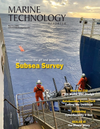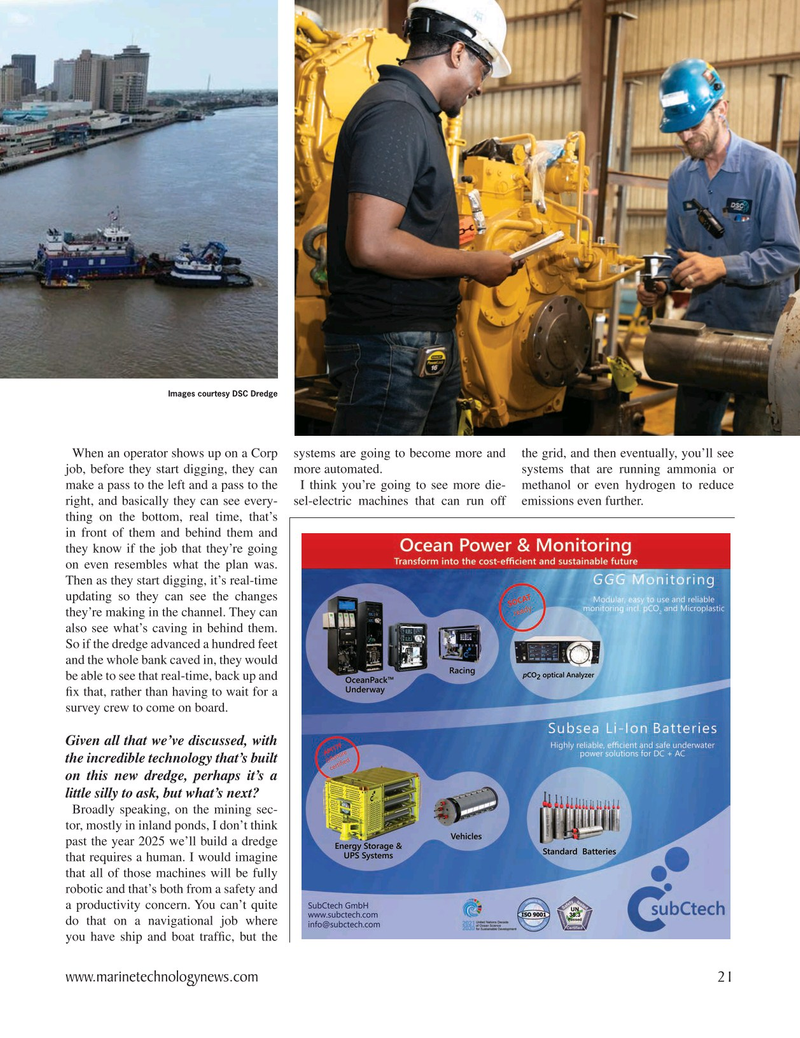
Page 21: of Marine Technology Magazine (May 2024)
Read this page in Pdf, Flash or Html5 edition of May 2024 Marine Technology Magazine
Images courtesy DSC Dredge
When an operator shows up on a Corp systems are going to become more and the grid, and then eventually, you’ll see job, before they start digging, they can more automated. systems that are running ammonia or make a pass to the left and a pass to the I think you’re going to see more die- methanol or even hydrogen to reduce right, and basically they can see every- sel-electric machines that can run off emissions even further.
thing on the bottom, real time, that’s in front of them and behind them and they know if the job that they’re going on even resembles what the plan was.
Then as they start digging, it’s real-time updating so they can see the changes they’re making in the channel. They can also see what’s caving in behind them.
So if the dredge advanced a hundred feet and the whole bank caved in, they would be able to see that real-time, back up and ? x that, rather than having to wait for a survey crew to come on board.
Given all that we’ve discussed, with the incredible technology that’s built on this new dredge, perhaps it’s a little silly to ask, but what’s next?
Broadly speaking, on the mining sec- tor, mostly in inland ponds, I don’t think past the year 2025 we’ll build a dredge that requires a human. I would imagine that all of those machines will be fully robotic and that’s both from a safety and a productivity concern. You can’t quite do that on a navigational job where you have ship and boat traf? c, but the www.marinetechnologynews.com 21
MTR #4 (18-33).indd 21 5/29/2024 9:44:40 PM

 20
20

 22
22
